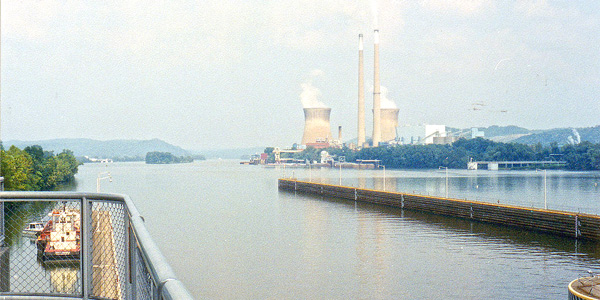By Rory D. Sweeney
In the latest salvo in an ongoing statistical squabble, the National Energy Technology Laboratory last week accused PJM of providing misleading analysis of its resource availability during last winter’s “bomb cyclone.”
NETL in March published its own analysis of the importance of coal-fired generation during the 13-day cold snap and found that in PJM “demand could not have been met without coal” and “it was primarily coal that responded resiliently, with some contribution from oil-firing units.”
Across the six RTOs/ISOs analyzed, the lab found that “coal provided 55% of the incremental daily generation needed” and “fossil and nuclear energy plants provided 89% of electricity during peak demand.”
NETL, which is organized under the Department of Energy’s Office of Fossil Energy and can trace its roots to a coal-mining research facility established in 1910, said that coal generation increased by approximately 30,000 MW to roughly 50,800 MW per day during the storm. It argued that a “lack of sufficient natural gas pipeline infrastructure” caused price spikes and fuel unavailability as gas demand for home heating surged during the cold spell.
That analysis prompted PJM to publish a response in which it said unused gas generation was available throughout the event, but that coal units were cheaper during some periods.
“This is a ‘good news’ story for coal resources from an economic viewpoint, but the fact that additional coal resources were dispatched due to economics is not a basis to conclude that natural gas resources were not available to meet PJM system demands or that without the coal resources during this period the PJM grid would have faced ‘shortfalls leading to interconnect-wide blackouts,’” the RTO wrote, taking issue with some of NETL’s conclusions.
Reserves exceeded 23% of peak load demand, “and there were few units that were unable to obtain natural gas transportation, even for most units that relied only on interruptible service,” the RTO said.
Regarding the lab’s characterization of coal units that came online “suddenly” during the cold weather, PJM said that 57% of coal generation was self-scheduled and 41% was scheduled based on economic offers.
For the peak day of Jan. 5, PJM said that 28,883 MW of gas generation was available and “mechanically able to operate but may not be scheduled based on economics.”
“While a unit may be ‘mechanically able to operate,’ this is no indication of whether the output of that unit would be deliverable to serve load,” the RTO said.
In April, PJM unveiled a three-phase plan to value fuel security in its markets, and on Nov. 1 it released the summary of a “stress test” study indicating the RTO should develop a market mechanism to compensate fuel security. (See PJM Begins Campaign for ‘Fuel Security’ Payments.)
NETL Response
But NETL responded Nov. 7 that PJM’s analysis of its performance remains flawed for several reasons. Among them, the lab said aggregation of available resources at the RTO level was inappropriate because it didn’t account for pipeline and transmission constraints.
“Total reserves were likely more than adequate in the aggregate; however, considering gas limitations and forced outages, functional and truly operable reserves were likely significantly less, on the order of half or less that of the reported reserves,” NETL wrote. “There was only 601 MW of idle fuel secure generation within the entire footprint at peak, with the balance providing some level of service to the system.”
Additionally, gas price spikes made it not only uncompetitive with coal but a lesser alternative to fuel oil, usage of which increased 455% during the bomb cyclone to 111 GWh, NETL said.
“For the last several days of the bomb cyclone, natural gas prices exceeded $20/MMBtu, allowing oil generation to displace gas-fired generation at a price equal to seven times the early December 2017 average PJM natural gas price for generation.”
PJM Reaction
But PJM stood by its original analysis.
“NETL seems to take PJM to task for not relying more on coal. However, NETL continues to erroneously conclude that the relative economics of coal and nuclear vs. natural gas during the cold snap, which drove the dispatch of coal units, indicates that the system would have faced shortfalls leading to interconnect-wide blackouts,” PJM wrote in an email to RTO Insider.
“PJM had adequate amounts of resources to supply power — the price of natural gas relative to coal and nuclear during the cold snap drove the dispatch decisions. … Our analysis of the cold snap showed that, with excellent coordination and cooperation with our members, the grid in the PJM footprint is diverse and strong and remains reliable.”



